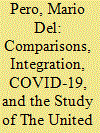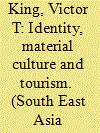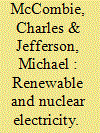|
|
|
Sort Order |
|
|
|
Items / Page
|
|
|
|
|
|
|
| Srl | Item |
| 1 |
ID:
180325


|
|
|
|
|
| Summary/Abstract |
As it happened, when the Italian government finally opted for a drastic lockdown to address the COVID-19 pandemic, I was still commuting on a biweekly basis to the lovely town of Menton, on the Cote d’Azur, where my university has a stunning beachside campus. The announcement of the lockdown conveniently followed a weekend when legions of skiers—buoyed by heavy snowfalls and the warm March weather—had inundated ski resorts, giving a further, unneeded spur to the spread of the virus. In Menton, just four kilometers from the Italian border, people seemed unconcerned. The annual three-week Fête du Citron, the festival of lemon, an event that draws more than 200,000 people to the little town every year, was under way (only the last week was eventually cancelled); lessons in a packed, windowless, and overheated amphitheater continued unabated; and the owner of the hotel where I was staying made a point of vigorously shaking my hand when I arrived. In the many WhatsApp groups and Facebook pages of the Italian academic diaspora—itself the byproduct of globalization and deep cuts to public education in Italy, as many colleagues know—we all wondered: how could this be possible? How could the rest of Europe, and France overall, sleepwalk while the pandemic was spreading unchecked in Italy, putting hospitals’ intensive care units under strain—such as those of Lombardy, Veneto, and Emilia-Romagna, the three most affected regions boasting some of the best hospitals in the world—and killing thousands of people in some of the wealthiest areas and cities of the continent?
|
|
|
|
|
|
|
|
|
|
|
|
|
|
|
|
| 2 |
ID:
154723


|
|
|
|
|
| Summary/Abstract |
In this study of the relationships between identity, material culture and tourism some of the different roles of the anthropologist in engaging with the wider field of cultural identity are examined. It commences with the approach of the conceptually-oriented anthropologist in addressing issues of culture, identity and ethnicity. Then it explores the role of the anthropologist in an applied mode with regard to the ritual cloths of the Iban of Sarawak, Malaysia. It argues for the importance of advocacy and persuading governments to acknowledge the importance of material emblems of identity and to ensure that indigenous knowledge and skills are sustained and contribute to local livelihoods. Finally the study considers the anthropologist as tourist and the ways in which an informed mode of travelling, in this case engaging with North-west Coast American/Canadian Indian totem poles, can contribute to the development of a comparative anthropology of tourism. It is argued that comparisons between Sarawak and the North-west Coast in the context of issues of identity, material culture and tourism can contribute to an understanding of the ways in which items of material culture are deployed and transformed in globalising processes of identity construction and transformation.
|
|
|
|
|
|
|
|
|
|
|
|
|
|
|
|
| 3 |
ID:
149955


|
|
|
|
|
| Summary/Abstract |
Given the widely acknowledged negative impacts of fossil fuels, both on human health and on potential climate change, it is of interest to compare the impacts of low carbon alternative energy sources such as nuclear energy, hydropower, solar, wind and biomass. In this paper, we review the literature in order to summarise the impacts of the different technologies in terms of their materials and energy requirements, their emissions during operation, their health effects during operation, the accident risks, and the associated waste streams. We follow up these comparisons with some more anecdotal evidence on selected impacts that are either particularly topical or are important but less commonly addressed. These include impacts of wind turbines on persons and on bird life, the underestimated problems with biomass, and concerns about biodiversity reduction. Finally we address the public attitudes towards both renewable energy technologies and to nuclear power. The conclusion is drawn that energy policies of many countries are perhaps more strongly influenced by public and political perceptions of available technologies than they are by rational assessment of the actual benefits and drawbacks. Policy recommendations follow from this conclusion.
|
|
|
|
|
|
|
|
|
|
|
|
|
|
|
|
|
|
|
|
|